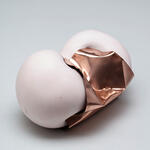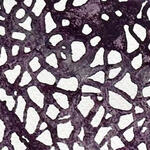Antonio Martorell
Bio
Antonio Martorell, born in Santurce, Puerto Rico in 1939. His workshop is in La Playa de Ponce. He has been artist-in-residence for more than 30 years at the University of Puerto Rico in Cayey. He keeps busy at painting, drawing, installation and performance art, graphics, set and costume design, theatre, films, TV, radio, writing for the press and has published four books. He is a host of the WIPR-TV program En la punta de la lengua. This television series has won 5 Emmy Awards. For more than three decades he has been a co-host with Rosa Luisa Márquez in the radio program 1,2,3 Probando on Radio Universidad de Puerto Rico. Visiting Professor at Hostos Community College in New York. (1997). He was awarded a fellowship at the David Rockefeller Center for Latin American Studies (2007). His work has been exhibited and awarded in and out of the country and is represented in private and public collections including the Museum of Modern Art, NY, the Whitney Museum, NY, the NY Historical Society, El Museo del Barrio, NY, the Library of Congress, the National Portrait Gallery, the Latino Art Collection of the Smithsonian, Washington, DC, National Museum of Puerto Rican Arts & Culture, Block Museum of Art, Northwestern University, Chicago, Frances Lehman Loeb Art Center, NY, Princeton University Library, NJ, Museo de Arte Moderno, Mexico, Casa de Las Américas, Cuba, Museo de Arte de Ponce, Instituto de Cultura Puertorriqueña, Museo UPR, Río Piedras and Cayey, La Casa del Libro, Museo de Arte de Puerto Rico, Museo de Arte Contemporáneo, PR, Museo de Bellas Artes, Caracas Venezuela, Museo de la República, Bogotá, Colombia among others. He is a member of the Academia Puertorriqueña de la Lengua Española. As a writer, Martorell is the author of the memoir La piel de la memoria (1991)(translated as Memory's Tattoo by Andrew Hurley), El libro dibujado/El dibujo librado (1995), El velorio (no-vela)(Martorell’s Wake)(2010),in a bilingual edition with English translation by Andrew Hurley which is a fictionalized commentary of the iconic nineteenth-century painting, El velorio, by the Puerto Rican Francisco Oller and his latest book, Pierdencuentra (2019), Los colores de Tó (2022) and recently published, the commemorative edition of the thirtieth anniversary of his first book La piel de la memoria by the publishing house of Universidad de Puerto Rico. He is the author of the Veveviejo texts, adapted for the theater by Rosa Luisa Márquez and performed by her and himself. He is the subject of Paloma Suau’s prize winning feature documentary film El accidente feliz (2019). Recently awarded the National Medal of Arts by the president of the United States, Joe Biden. Special guest and lifetime achievement award at the National Puerto Rican Parade in New York.
Statement
I consider myself a circumstantial, superficial and degenerate artist. Circumstantial because I strive to respond to circumstances around me, be them near or far. Catastrophes, natural disasters, political and personal upheavals move me to the creation of images. I am also a superficial artist since I love relating to surfaces that provoke handling them, intervening and searching for meanings in its colors and textures discovering their language. And, at eighty four years in this planet and sixty working as an artist I can claim not being restricted to any single generation, but still developing.
Información adicional
“In January of 2020, we began and completed eleven tapestries before, during, and after the earthquakes that cracked roofs and walls at the Studio, forcing us to wear hardhats in the midst of the destruction. We didn’t stop a single day, because we were so enthusiastic after reading “Once tesis sobre un crimen de 1899” (Eleven Theses on a Murder in 1899) by Arcadio Díaz Quiñones with prologue by Gervasio García — the story of the killing of a soldier in the invading Americans’ forces at the hands of a Caguas coachman, his arrest, trial, and imprisonment by a military tribunal after the end of hostilities and in a language the accused did not understand, the mind-blowing experience of seeing the images emerge from the juxtaposition of fabrics that evoked the period — that I couldn’t stop until the series was completed. The combination of felt with cut velvet, the large square format based on photographs, the news clippings and court files provided in the careful edition published by Luscinia CE, was a prelude to what was to come”.


2.5 x 4m / 98.4 x 157 in

















